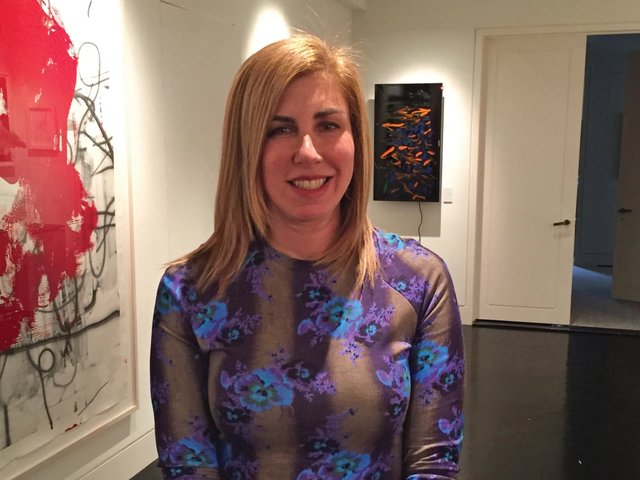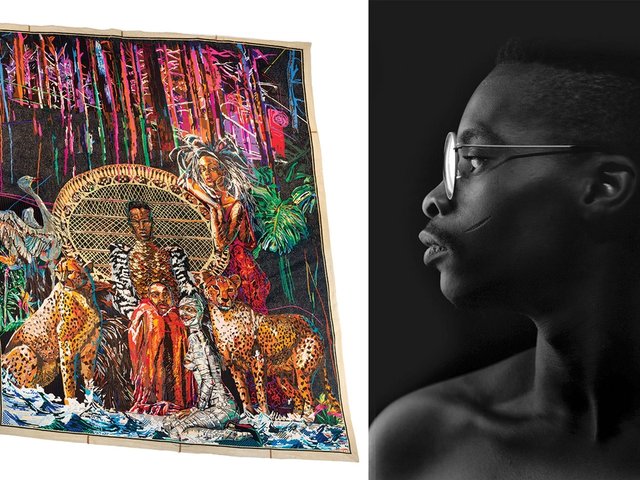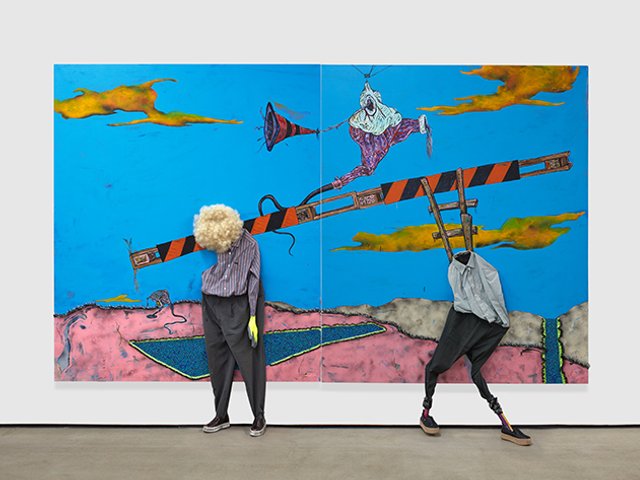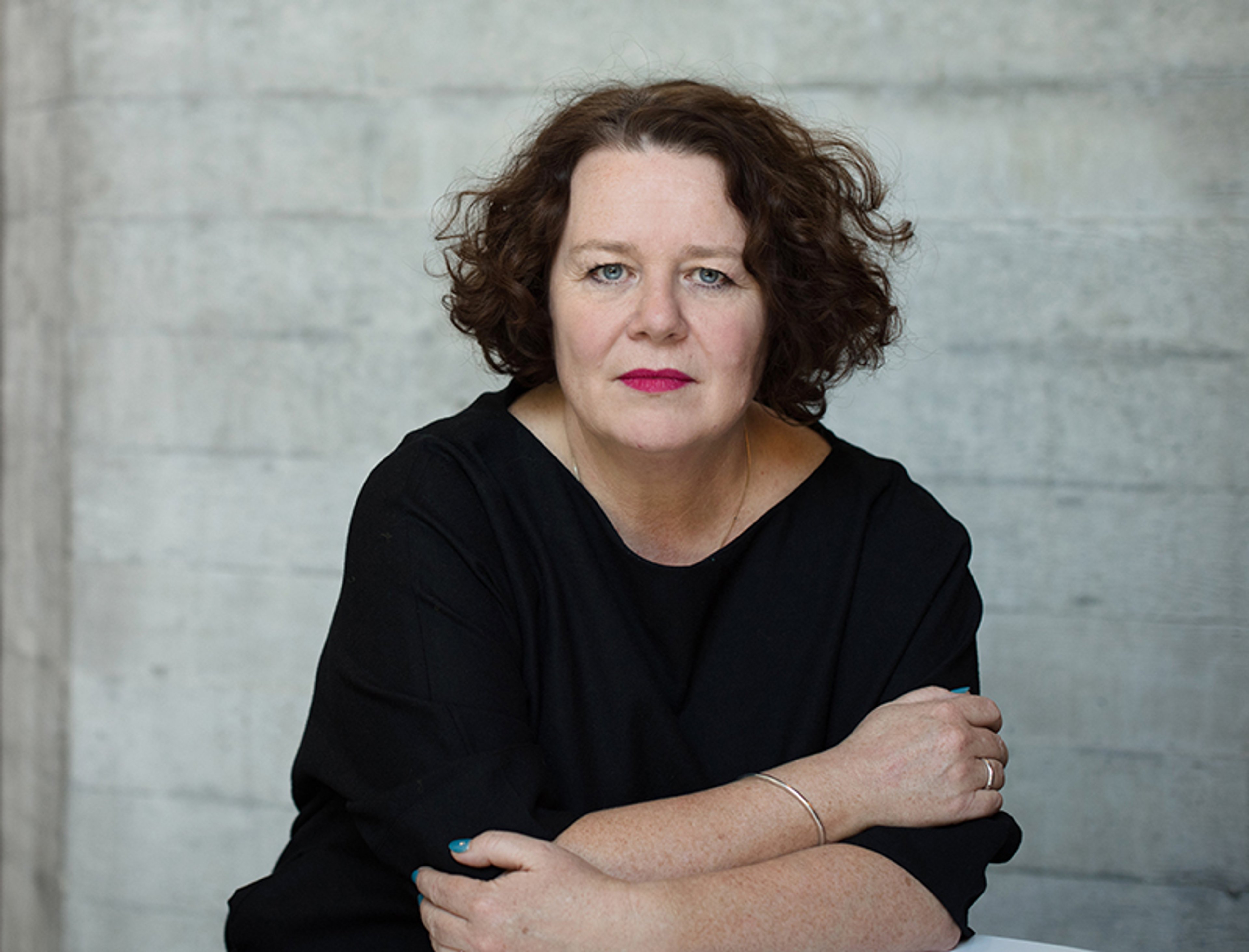
“When Nicole [Berry, the director of The Armory Show] asked me to do these commissions and it was the 25th anniversary of the Armory, I thought, what other anniversaries are there?” says Sally Tallant, who has organised the curated Platform section of the 2019 Armory Show. Tallant, the new Queens Museum director, settled on the 1939 New York World’s Fair. With the hopeful forward-looking theme of “Building the World of Tomorrow”, the fair took place in a period of growing nationalism, populism and a refugee crisis, and “you could say we’re facing very similar issues”, Tallant says. In a dark time, artists do “the most hopeful thing”, she adds. “To make something in this world and to make something of this world is hopeful act and a resilient act.” Scattered throughout the fair (with some locations changed due to the last-minute shakeup of the Armory’s venue) are works by nine artists who “are asking important questions and giving us opportunity to think about complex challenges that we face”, Tallant says. Photo: Hugo Glendinning
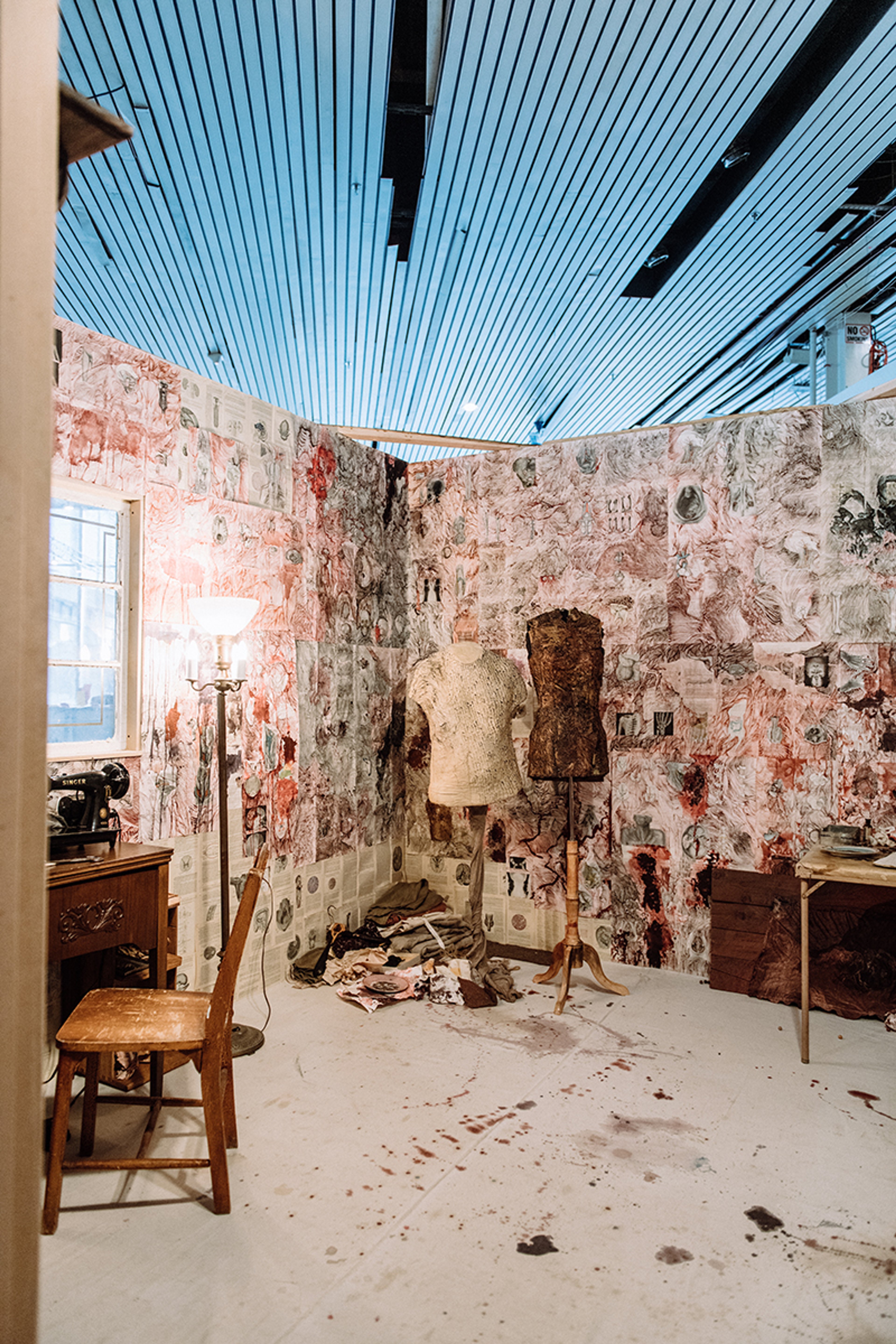
Iris Häussler, Apartment 5 (2019), Daniel Faria Gallery and John Michael Kohler Arts Center: The German artist Iris Häussler makes immersive installations about fictional characters, with complex narratives behind them. “I never pick my subjects—they pick me,” she says. At The Armory Show, she is presenting a room installation of the New York studio of the seamstress and painter Florence Hasard, a French immigrant to the US who was born in the 1880s. “We are in one chapter of a woman’s biography who was haunted by her inner ghosts of post-traumatic stress syndrome” from her time as a nurse in a military hospital during the First World War, Häussler says. The walls of the space show her “inner landscape”—a dizzying wallpapering of pages torn from antique copies of Gray’s Anatomy, with reddish map-like forms that also look like muscles, fascia or veins. Häussler has brought in the World’s Fair theme, with vintage objects from the French pavilion presented in display case outside of the room. Photo: Teddy Wolff
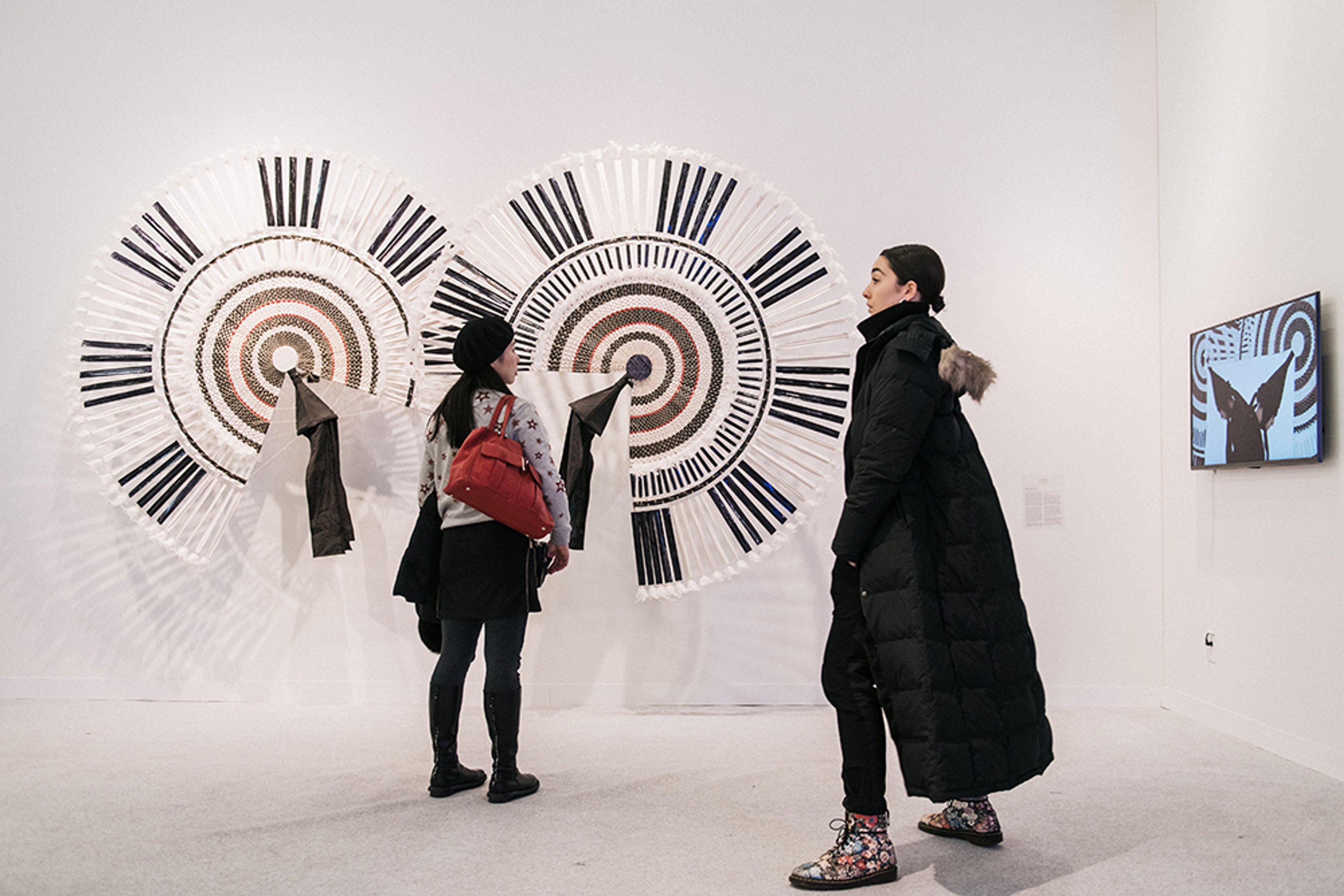
Tania Candiani, Reverencia (2019), Galeria Vermelho: The Mexican artist Tania Candiani “often uses complex research” in her work, Tallant says. Her work at The Armory Show, Reverencia (2019), references the traditional Dance of Los Quetzales, a dance of gratitude that was presented at the Mexican pavilion at the 1939 World’s Fair. Two giant headdresses or “Penachos” worn in this dance, here made of materials including bamboo, ribbons and feathers, are hung on the wall, and a video of a performance of the dance is also presented. “What they’re acting as is a kind of welcome of gratitude, which of course is politically relevant now” given US-Mexico border relations, Tallant says. Photo: Teddy Wolff
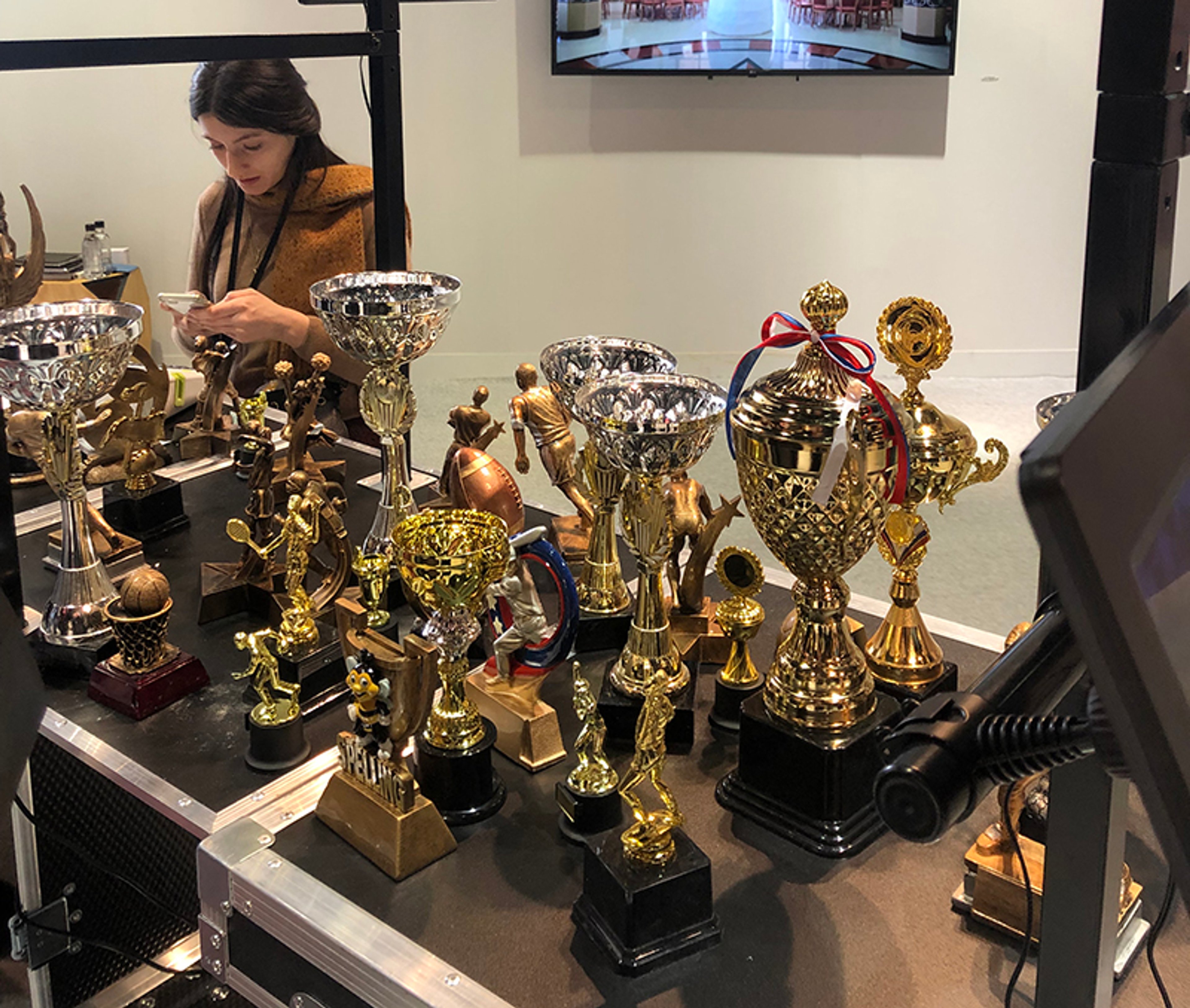
Super Taus (Taus Makhacheva), Quick Fix (2019): When the Russian-Dagestani artist Taus Makhacheva is “too busy to do something, she sends ‘Super Taos’, [who] has superpowers”, Tallant says. (Case in point: a dashcam video on view at the fair, which shows her moving a “boulder” to clear a roadway.) Makhacheva’s alter ego herself is on display in the work Quick Fix, in which visitors can roll a die to win a trophy—if they get a “YES”, on three of six sides, and then another “YES” to get the trophy of their choice, which they can take home for free. The superpower-wielding artist then puts a label from a group of available prizes on the trophy (this lucky journalist with two consecutive yes rolls chose “The Best Cock-and-Bull Story Prize”) or will make a custom prize label. (So far, these have included “Best Ass” and “Best Cat Mom”.) “What’s interesting [about the work] is watching people have that really intimate interaction with someone,” Tallant says.
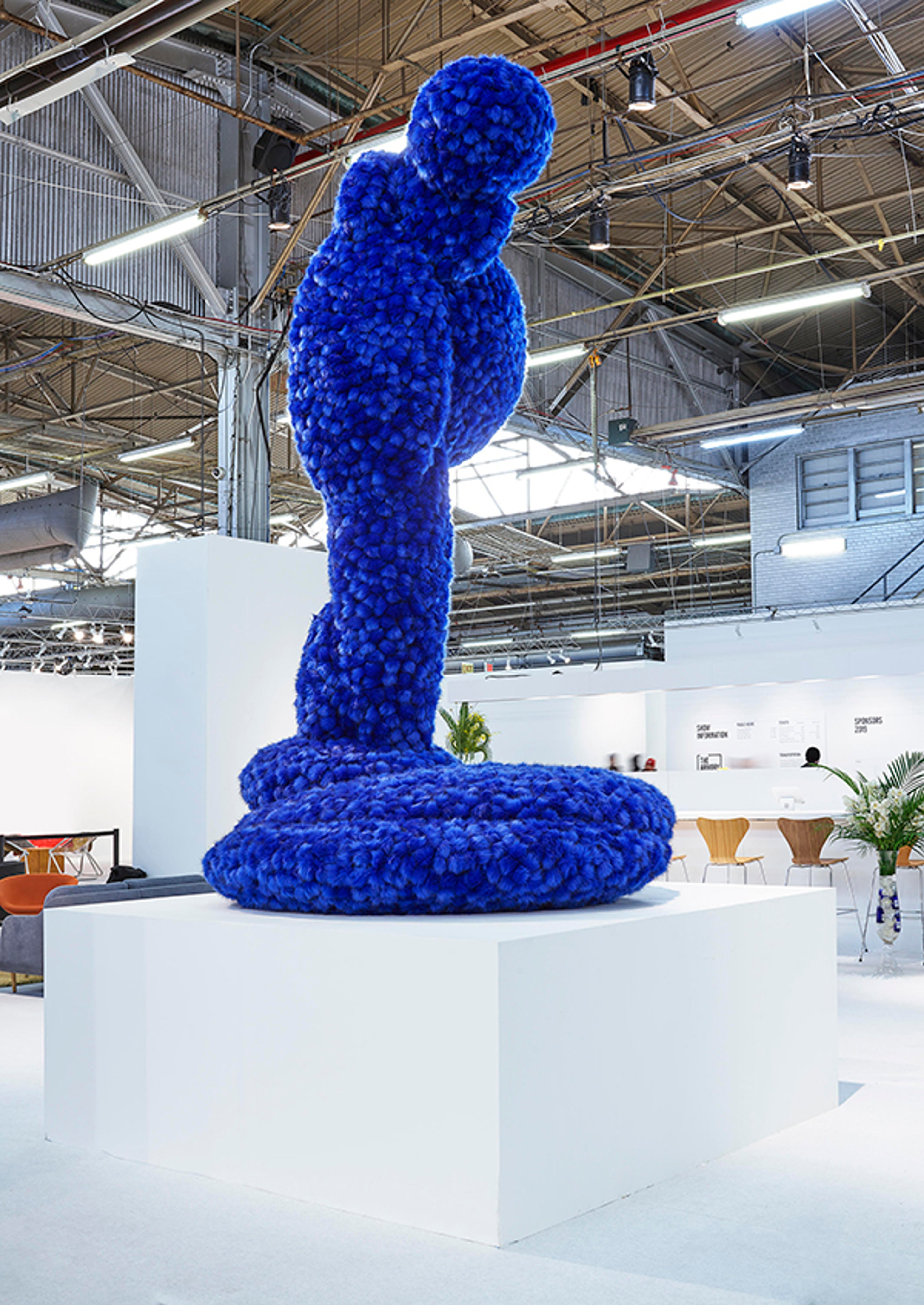
Ryan Gander, Het Spel (My neotonic ovoid contribution to Modernism) (2019), Lisson Gallery: The UK artist Ryan Gander’s sculpture Het Spel (My neotonic ovoid contribution to Modernism) (2019) takes the 1918 sculpture Komposition Aus Dem Ovoid (Composition from the ovoid) by the Belgian artist and De Stijl co-founder George Vantongerloo, blows it up on a massive scale and covers it in fluffy blue balls. “He’s interested in a kind of comic reinvention of modernist sculptures,” Tallant says. “It’s really irreverent.” In that irreverence, he is “reclaiming [the history of Modernism], remaking it, reimagining it”. The presentation has won the inaugural Pommery Prize, which gives $20,000 for the artist and gallery to share. © Ryan Gander; courtesy of the artist
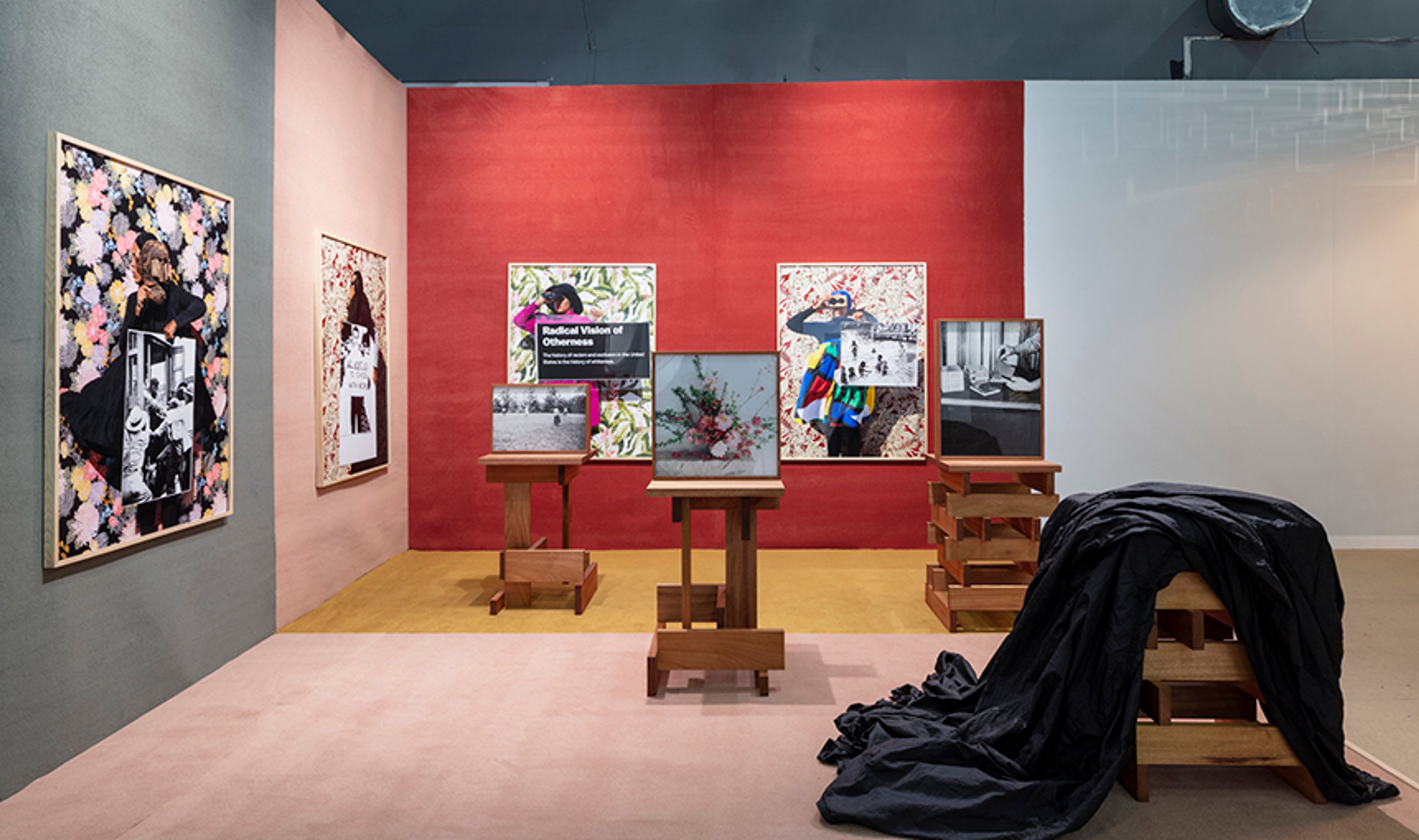
Xaviera Simmons, Chord (2018-19), David Castillo Gallery: The US artist Xaviera Simmons says Chord (2018-19), an installation of photographic and sculptural works, is a “recovery of a narrative”, including generational wealth or poverty based on race and policies that have historically influenced this. “I’m really thinking about those policies, but I’m an artist, so I have to embed the political inside the material—I can’t let that go,” Simmons says. “This work really is unpacking image by image a 400-year-old history through image, through sculpture, through text, through archive searching.” (This year marks the 400th anniversary of the first arrival of African slaves in the future US, in 1619.) “I also still love beautiful objects, I love colour and I love craft. They all have to come together,” she says. The works include photographic pieces that mix photographs of the artist, archival images and wallpaper prints, and elegant mahogany pieces. “I’m really interested in craftsmanship in the especially when you think of black Americans who are descended from slaves here, we’ve lost a lot of the narrative. Who made what? We were [hundreds of years] producing things that we got no credit for.” Courtesy of David Castillo Gallery
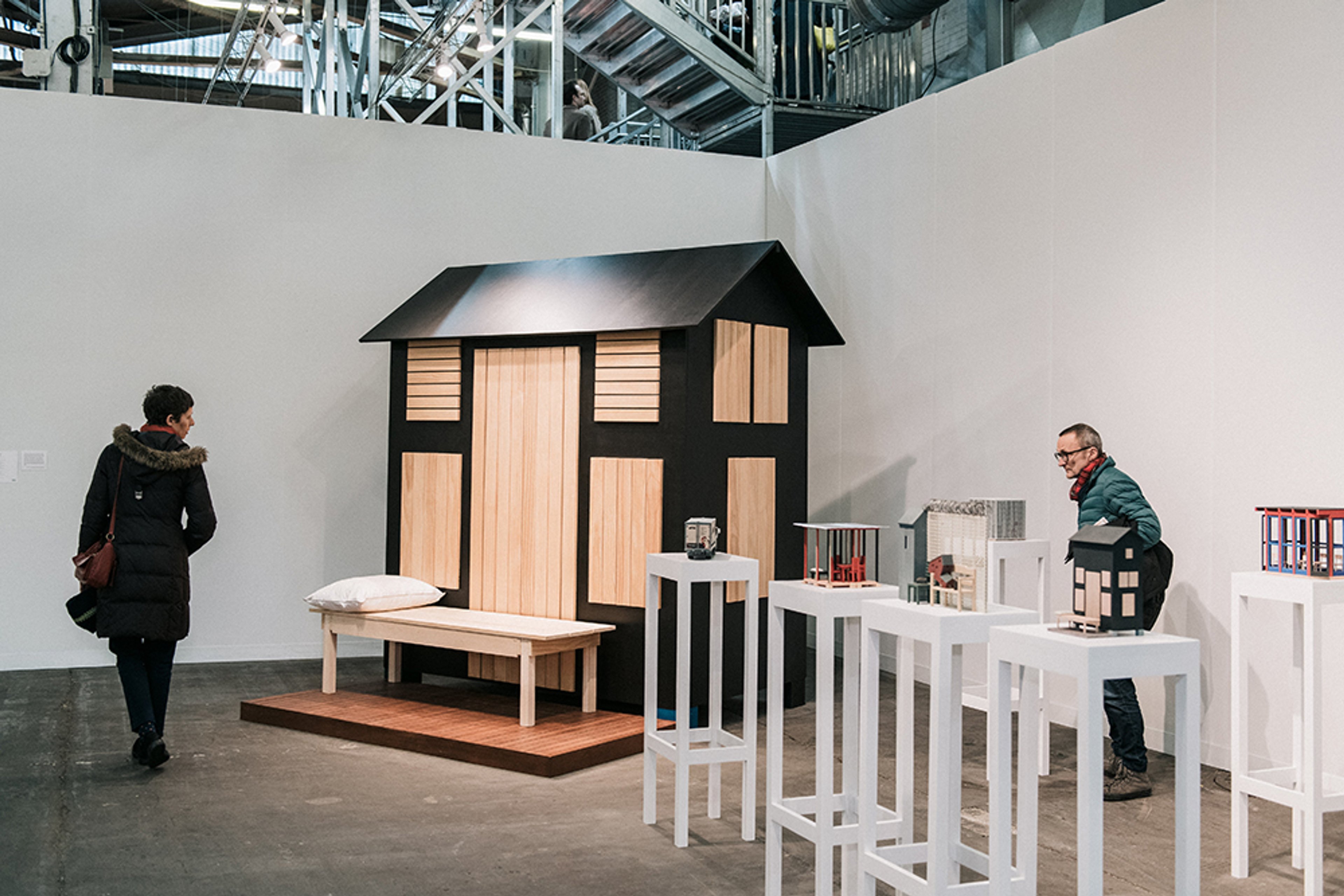
Siah Armajani, Seven Rooms of Hospitality (2016-17), Rossi & Rossi: “I think being able to understand the world and being able to understand the challenges and problems of the world is hopeful,” Tallant says. “When you look at Siah’s work and you think about refuges or asylum seekers or detainees and it prompts you to be more empathetic—I find that hopeful.” The Iranian-born artist Siah Armajani, who also has solo presentations at the Met Breuer and the Public Art Fund, is showing his most recent body of work, Seven Rooms of Hospitality (2016-17), which references the migrant crisis through mini 3-D printed models (some of which have been realised as large-scale sculptures) of spaces like a detention centre and a truck. The small models are shown alongside a large-scale version of one of the spaces, Room for Migrant Worker. “Within this context [of an art fair], it feels really important to be bringing in this kind of statement,” Tallant says. Photo: Teddy Wolff
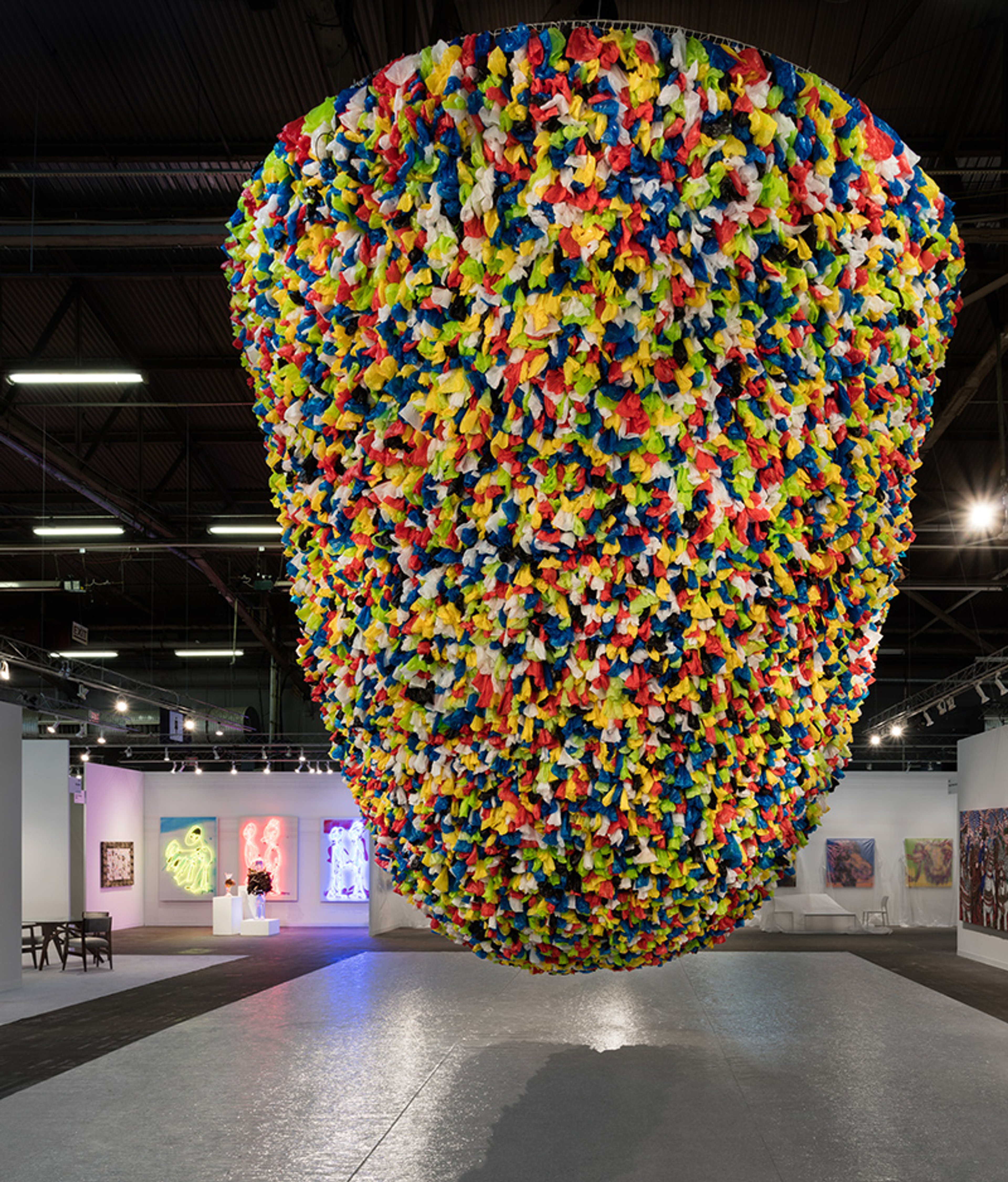
Pascale Martine Tayou, Plastic Bags (2019), Taittinger Gallery and Galleria Continua: The suspended work Plastic Bags (2019) by the Cameroonian artist Pascale Marthine Tayou, the most monumental of the Platform works, addresses plastic waste and ecological issues. “It’s a kind of very spectacular work that’s created by very simple means,” Tallant explains—coloured plastic bags attached to a frame, assembled onsite. “It has a presence,” she says. It does seem to command some sort of space—on the fair’s opening day, as the aisles bustled with visitors, there was a force field of space around Tayou’s piece, punctured only by the occasional person posing for photographs. Tallant says she spotted people earlier that morning lying underneath the work. Photo: Charles Benton; courtesy of the artist, Richard Taittinger Gallery, New York, and Galleria Continua, San Gimignano/Beijing/Les Moulins/Habana
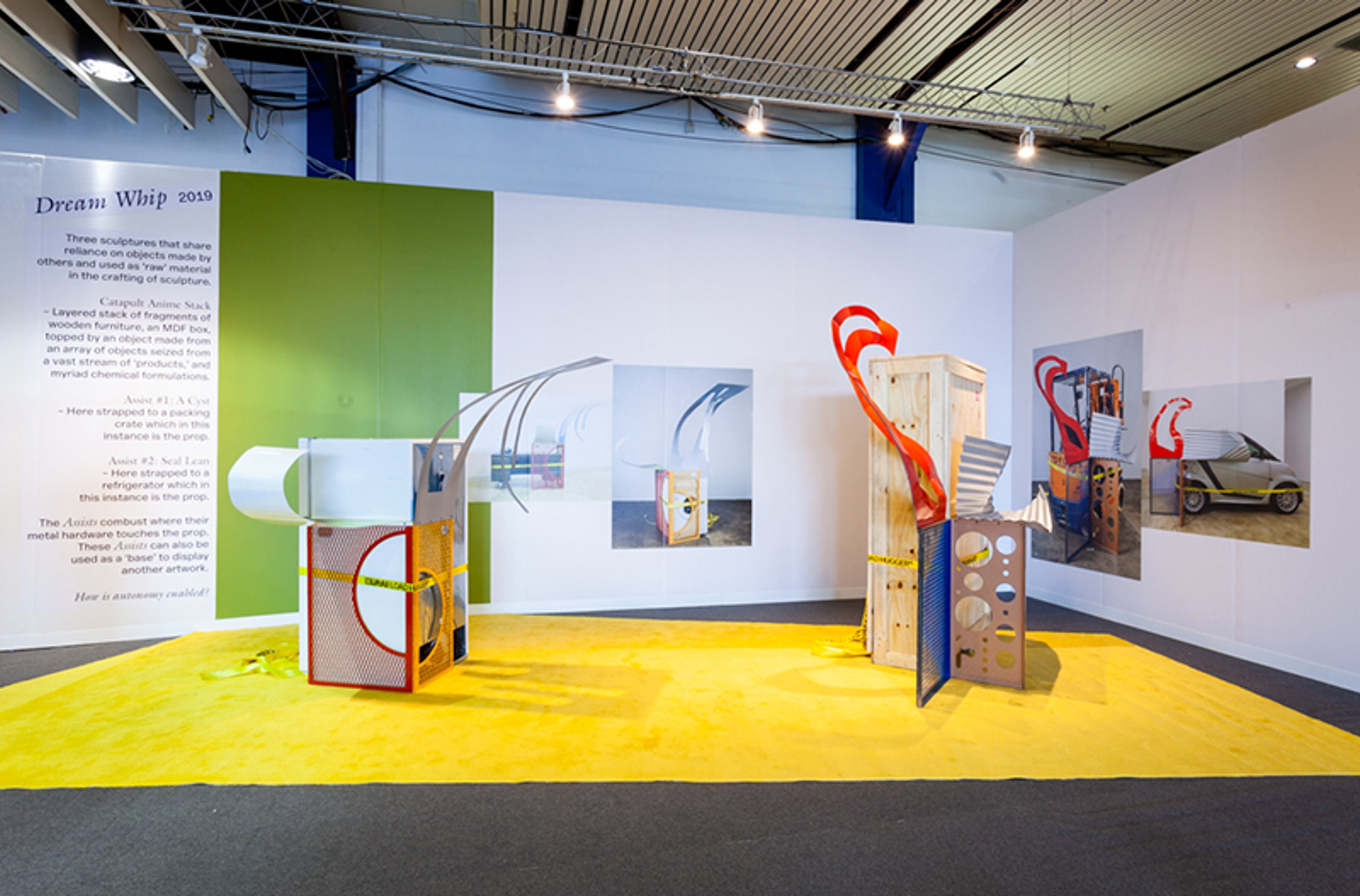
Jessica Stockholder, Dream Whip (2019), Kavi Gupta Gallery: The Chicago-based artist Jessica Stockholder is showing Dream Whip (2019), a series of “assists” sculptures that “only exist when they’re attached to something”, Tallant explains. “It’s about asking that question of what does it mean to be interdependent and reliant on someone else? It’s a simple kind of question but it proposes a symbiotic interdependency that actually makes us think about our relationships with other people.” The sculptures are mounted on everyday objects, like a refrigerator, which “are props, but they are [part of the work] because they’re paralysed as objects”, she adds; for instance, the refrigerator is not plugged in and thus cannot serve its intended function. Photo: John Lusis, courtesy of the artist and Kavi Gupta gallery
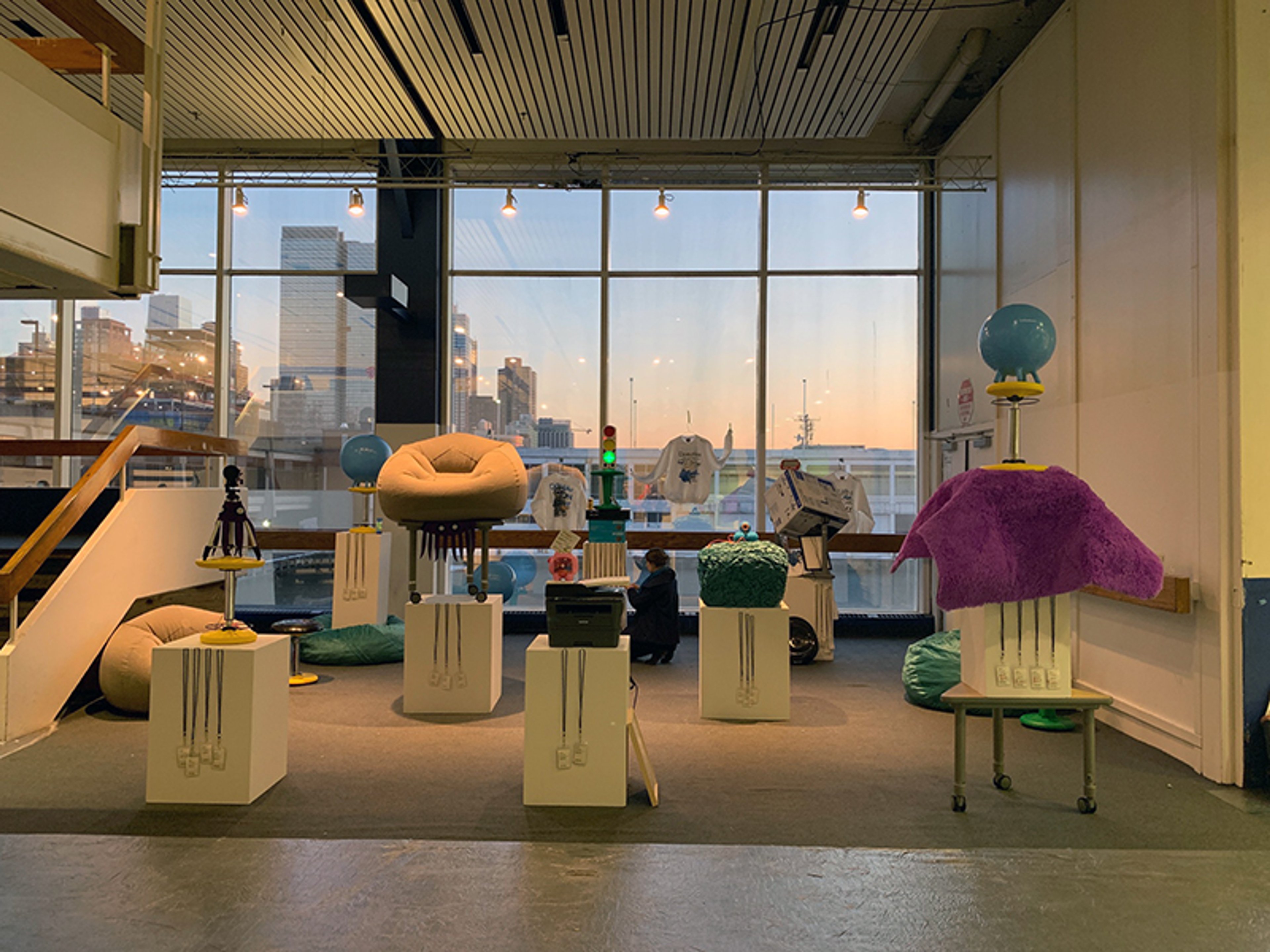
Andreas Angelidakis, Donation Drive (2019), The Breeder: The Greek artist Andreas Angelidakis’s work shows objects from the wish lists of public school teachers as requested through the organisation Donation Drive, and fairgoers can purchase individual objects, such as a bean bag chair or a robotic learning tool. The sale price will go towards buying items on the teachers’ wish, and collectors are encouraged to donate the physical object they have purchased at The Armory Show to the school. The work uses the art fair context to “create a value in the real world”, Tallant says, “giving people an opportunity to invest in something that’s really needed”. © Andreas Angelidakis; courtesy of the Breeder, Athens
“When Nicole [Berry, the director of The Armory Show] asked me to do these commissions and it was the 25th anniversary of the Armory, I thought, what other anniversaries are there?” says Sally Tallant, who has organised the curated Platform section of the 2019 Armory Show. Tallant, the new Queens Museum director, settled on the 1939 New York World’s Fair. With the hopeful forward-looking theme of “Building the World of Tomorrow”, the fair took place in a period of growing nationalism, populism and a refugee crisis, and “you could say we’re facing very similar issues”, Tallant says. In a dark time, artists do “the most hopeful thing”, she adds. “To make something in this world and to make something of this world is hopeful act and a resilient act.” Scattered throughout the fair (with some locations changed due to the last-minute shakeup of the Armory’s venue) are works by nine artists who “are asking important questions and giving us opportunity to think about complex challenges that we face”, Tallant says. Photo: Hugo Glendinning
Hope punctures darkness in The Armory Show's Platform section
Nine large works pose big questions in tandem with a World’s Fair theme
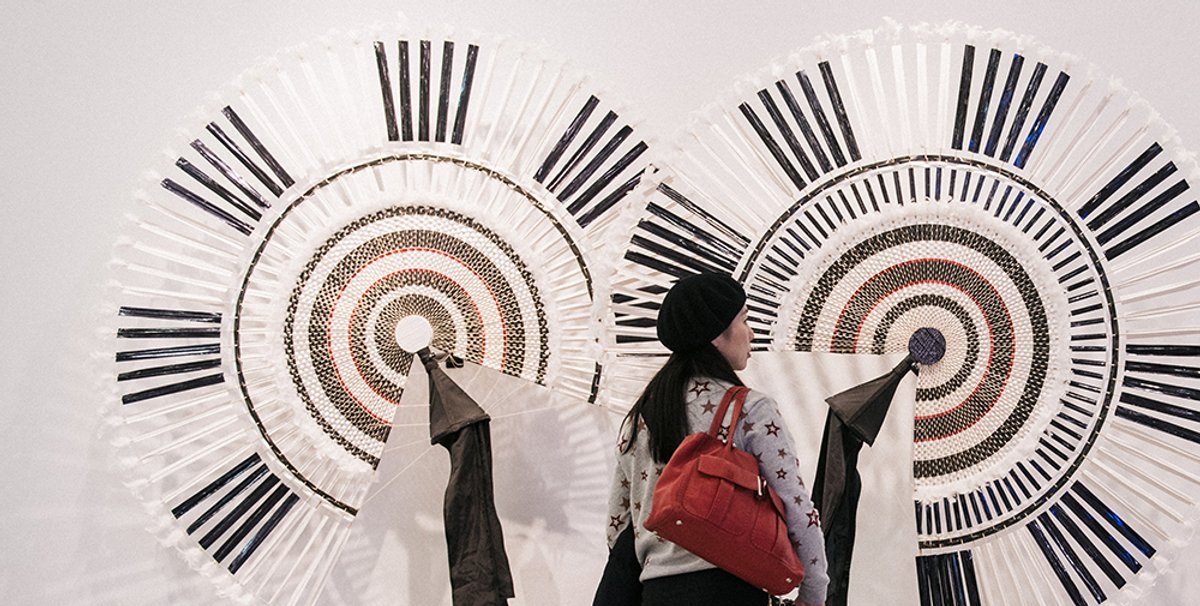
Tania Candiani, Reverencia (2019) Photo: Teddy Wolff


